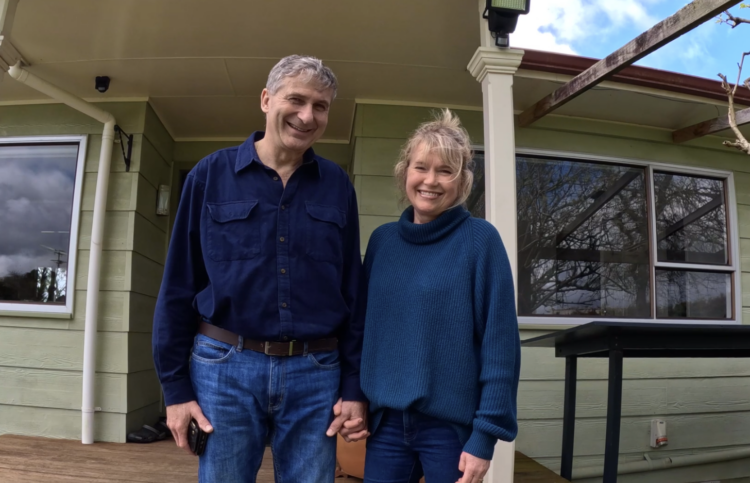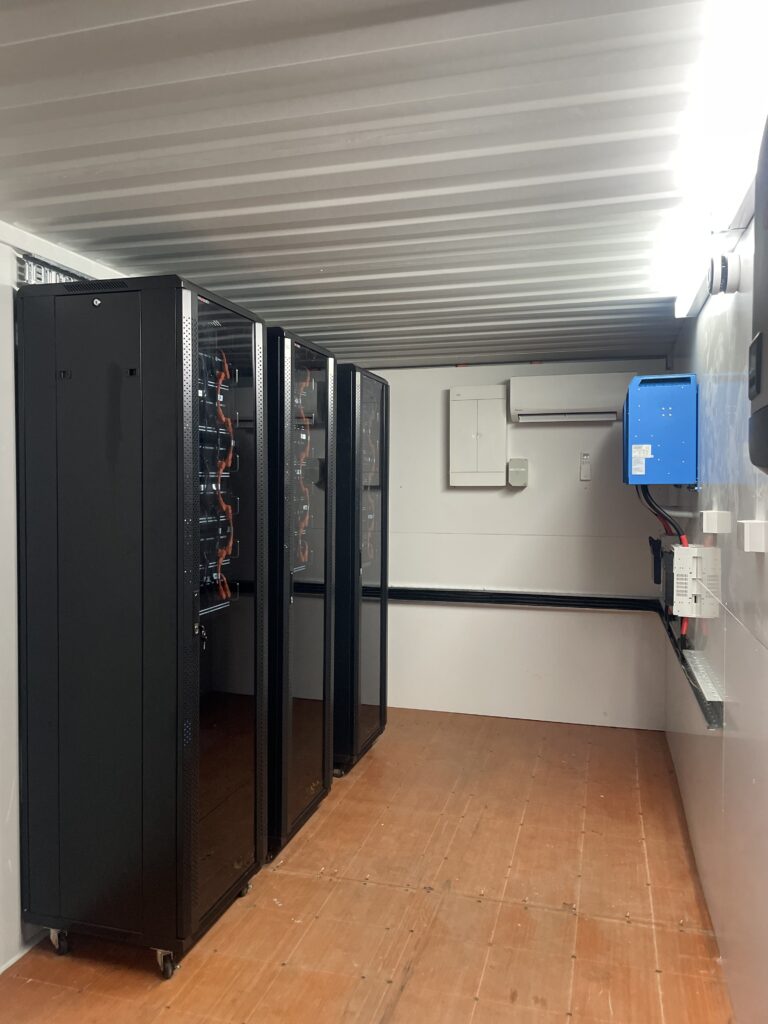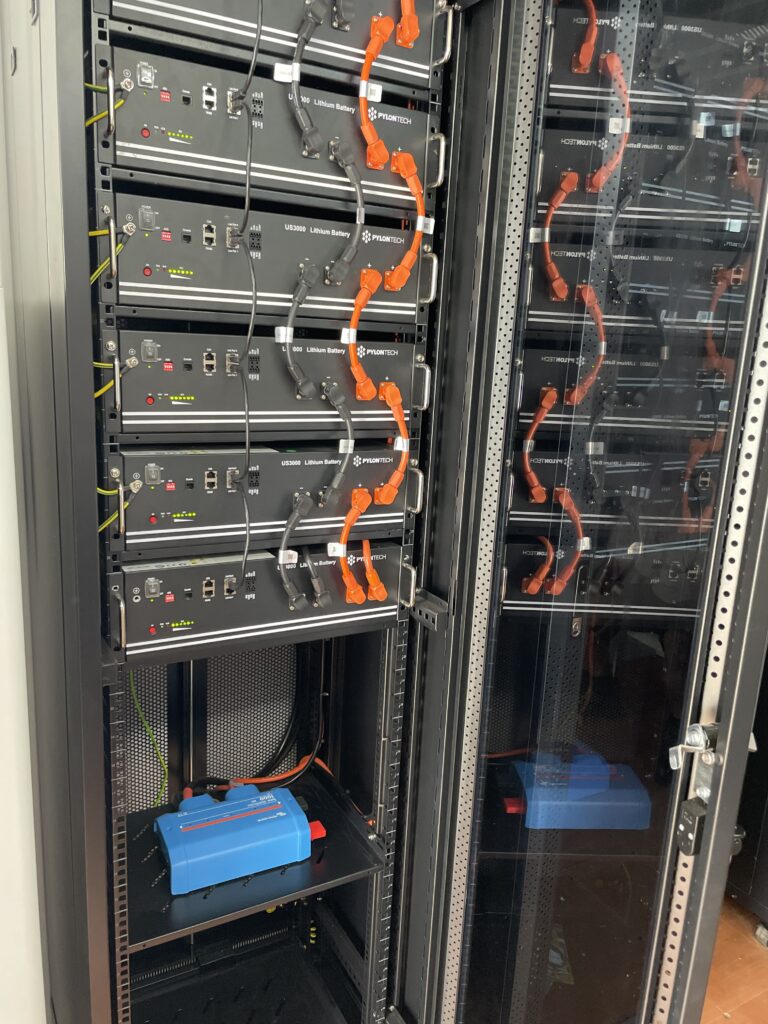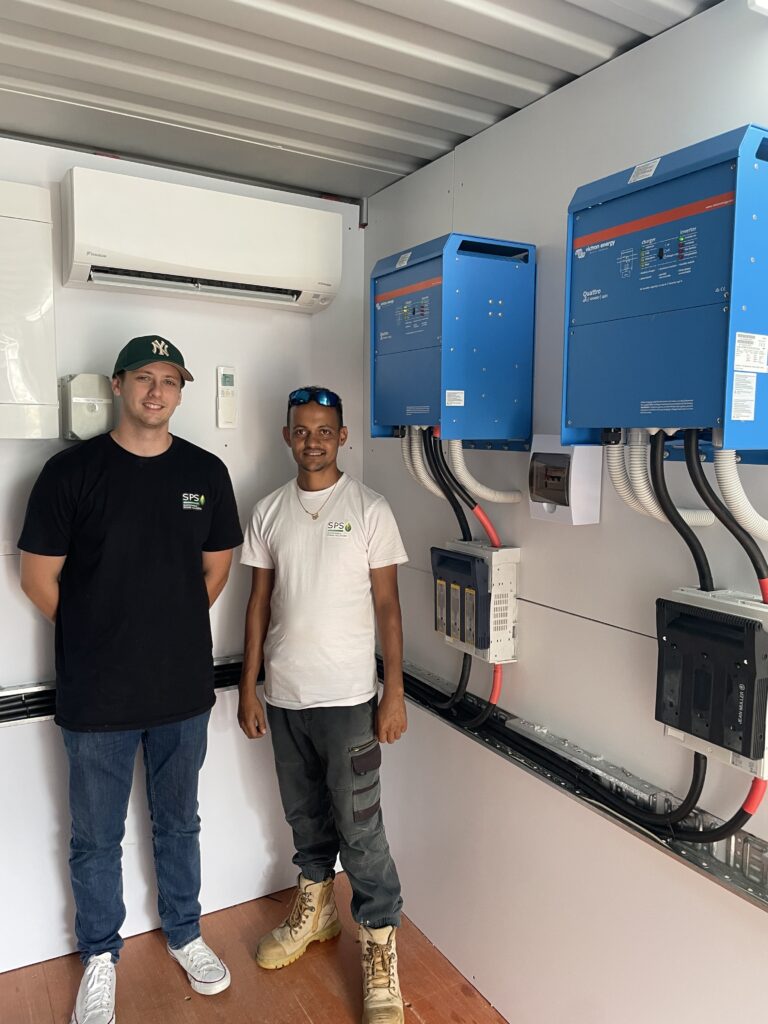
The power supply at Tim and Fiona’s homestead in Auckland, New Zealand is distributed from a micro grid which serves their extended family of eight, across three tiny homes, the main residence, and large workshop.
They have an EV and their private water supply is from filtered rainwater which is pressurised – so the power demand across the site can be quite high.
At their rural location power cuts on the electricity grid have always been a feature of normal life. But initially the problems of solar power distribution to each household and the varying patterns of power consumption within each dwelling meant that the calculation and sizing of the new solar energy installation was complicated. Planning a system which would work for him, Tim says he felt well supported by the solar engineering, procurement and construction company Sustainable Power Solutions.
He’d been dreaming of building a reliable solar energy system capable of providing most – if not all – of their energy needs for 15 years …now they’ve got it he’s really pleased with how it’s all working out. Dependence on the electricity grid has fallen almost to nil, and he plans a final phase which will allow them to disconnect from the grid entirely.
Installation
Having completed a site survey Sustainable Power Solutions decided to distribute power from a central hub – built inside a small container. This offers several advantages:
- Centralised power could be located so that the cable runs to point-of-use are optimised.
- It allowed the system to be factory built and tested – minimising on-site disruption.
- There is room to add more devices in the container to increase power capacity if that is required in future.
- The unit is dedicated to energy management without competing for storage space with unrelated items.
A 16kWp solar array supplies power to the container which houses the following energy devices:
- Two Fronius Primo 5KW AC inverters
- Two Quattro 10kVA Inverter Chargers – frequency shift settings control the output of the Fronius Inverters
- Colour Control GX is a communication centre device which allows data communications between installed devices, and provides user-access or engineer-access from anywhere in the world via the free-to-use Victron Remote Management platform VRM.
Sustainable Power Solutions monitor Tim’s installation via the internet based platform Victron Remote Management. In addition to real-time status, historic analysis, firmware updating and remote configuration, VRM can send email alerts automatically if system data readings fall outside set parameters. Over forty data-sets are monitored across all the primary devices – such as low voltage, low battery and product error code notifications.
- Lynx Distributors provide covered busbars with monitored fuses and allow for tidy DC distribution
- Eighteen Pylontec US3000 offer energy storage capacity of 63kWh
- The container houses a Haier 3kW heat pump
Located elsewhere on site there is an ITC 10kVA back-up generator.
The energy system provides power to a WallBox EV Charger rated at 7.5kW – keeping the family’s EV fully charged. Their average daily mileage is 30 miles (50km) which equates to a daily power consumption of approximately 10kWh.
Future Proof
During 2024 there are plans to augment the 16kW of solar panels currently on site with a further ground-mounted array which, it is hoped, will provide Tim and Fiona with complete energy independence.
The container has been built to allow for future power augmentation. They plan to install a third Quattro 10kVA, and to enhance their solar harvest with two SmartSolar MPPT RS solar charge controllers. These high voltage devices are designed for larger solar arrays, reducing cable losses, and they can be daisy chained for synchronised charging.
Complete power independence would at last realise Tim’s dream of 100% sustainable energy.
Sustainable Power Solutions can be reached at their website or on their Facebook page.















 #victronenergy #adventure
#victronenergy #adventure
 ELECTRICS
ELECTRICS 
